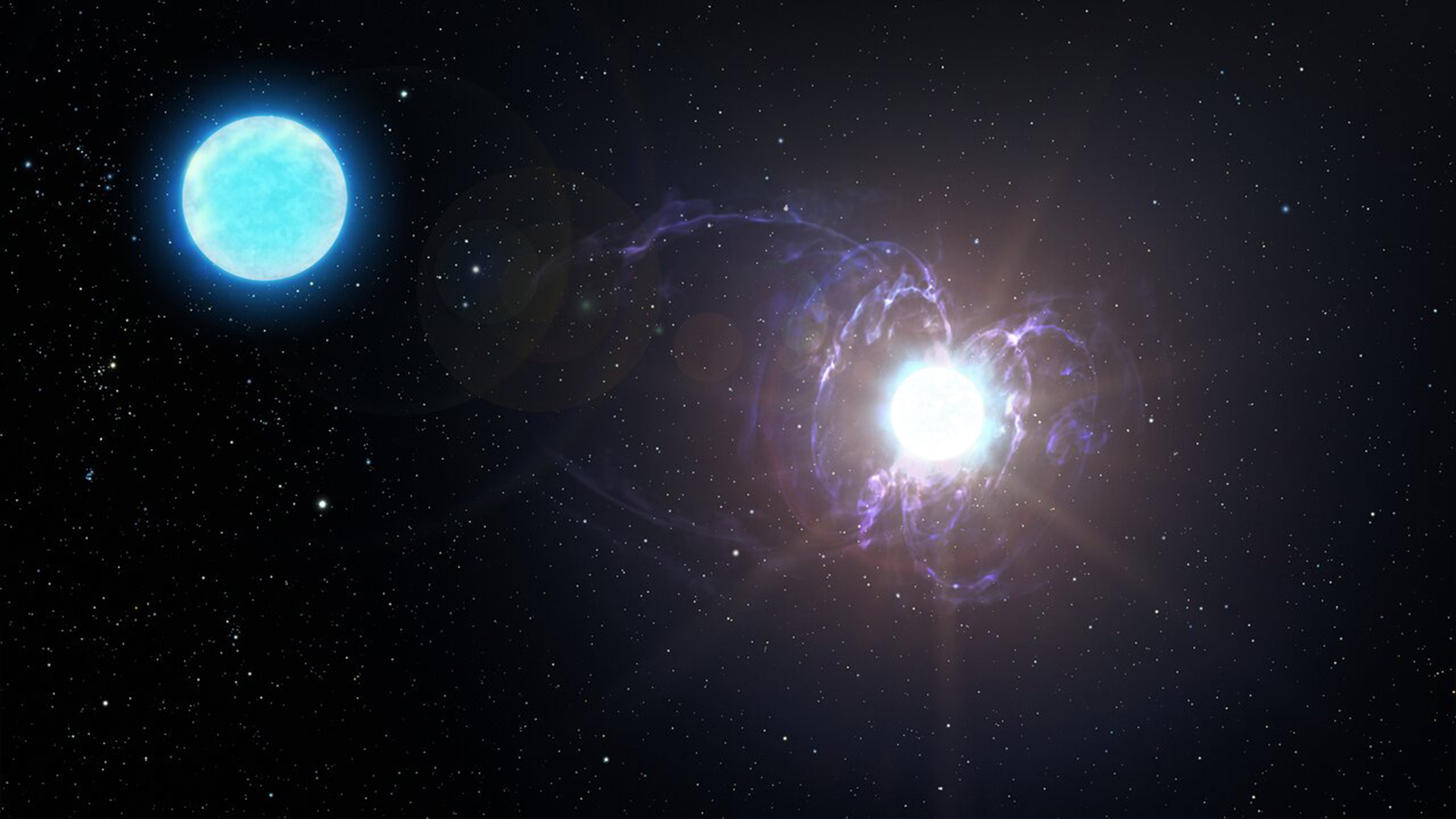Bizarre new cosmic object is the most magnetic star in the universe
The record-breaking find of a star 43,000 times more magnetic than the sun could help unravel the mystery of how magnetars form.

Scientists just uncovered the most magnetic star in the universe. The star, known as HD 45166, has a unique, helium-rich spectral signature that hints at an unusual origin.
And in addition to setting records, it might represent the first stage in the lifecycle of a magnetar — a strange type of neutron star.
Neutron stars are the densest known celestial objects in the universe, packing a sun's worth of mass into a ball no wider than a city. Their highly magnetic versions — known as magnetars — have some of the strongest known magnetic fields in the universe. Neutron stars and magnetars form in the wake of massive supernova explosions, when the leftover material from a dead star condenses back into an extremely dense, hot object.
Related: Bizarre 'failed star' the size of Jupiter is 2,000 degrees hotter than the sun
But astronomers are still trying to understand what conditions produce magnetars versus regular neutron stars. The new study, which was published in Science on Aug. 17, could shed light on that process.
Located 3,000 light-years from Earth in the constellation Monoceros (the Unicorn), HD 45166 has puzzled scientists for more than a century. The star behaves similarly to a type of extremely bright stellar object known as a Wolf-Rayet star, except that it is smaller, dimmer and has an abnormally high concentration of helium. However, nobody had put forth a satisfactory hypothesis to account for its weird spectral signature — until now.
"I remember having a Eureka moment while reading the literature: 'What if this star is magnetic?'" Tomer Shenar, an astronomer at the University of Amsterdam and co-author of the new study, said in a statement.
Get the world’s most fascinating discoveries delivered straight to your inbox.
Using data from several ground observatories, Shenar and his team discovered that HD 45166 is extremely magnetic — a record-smashing 43,000 times more magnetic than the sun. The researchers suspect that, unlike most massive helium stars, which evolve from red supergiants, HD 45166 formed during a merger between two smaller stars. They also believe that in several million years, it will explode into a modest supernova and re-form as a magnetar.
"This is a very specific scenario," André-Nicolas Chené, an astronomer at the National Science Foundation's National Optical-Infrared Astronomy Research Laboratory and co-author of the study, said in a statement. "It raises the question of how many magnetars come from similar systems and how many come from other types of systems."
In the meantime, this proto-magnetar represents a new type of stellar object never seen before — a massive magnetic helium star.

Joanna Thompson is a science journalist and runner based in New York. She holds a B.S. in Zoology and a B.A. in Creative Writing from North Carolina State University, as well as a Master's in Science Journalism from NYU's Science, Health and Environmental Reporting Program. Find more of her work in Scientific American, The Daily Beast, Atlas Obscura or Audubon Magazine.


